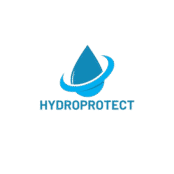Understanding Hotmelt Roof Waterproofing
Hotmelt roof waterproofing is an advanced insulation method recognized for its durability, versatility, and effectiveness. This cutting-edge technology has become a favorite among hall and warehouse owners, developers, and property managers seeking robust protection against leaks and environmental elements. By opting for hotmelt solutions, property stakeholders can rest assured that their investments are secure from weather-related damages and unnecessary repair costs.
Definition of Hotmelt Roof Waterproofing
Hotmelt waterproofing is a roofing system that utilizes bitumen-based liquid that is heated until it becomes malleable, creating a seamless and fully bonded membrane. This technique is particularly beneficial for flat roofs and complex building structures, filling gaps and adhering perfectly to substrates. As it cools, it forms a durable, flexible, and watertight seal that can withstand heavy traffic and challenging climate conditions.
Components and Materials Used
- Bitumen: The primary component, known for its strong adhesive properties and resistance to water penetration.
- Reinforcement: Typically involves the use of polyester or fiberglass mesh to enhance tensile strength and longevity.
- Surface Finish: Options such as gravel, pavers, or green roofs that provide added protection and aesthetic appeal.
Advantages of Hotmelt Roof Waterproofing
Choosing hotmelt roof waterproofing offers a multitude of benefits. Understanding these advantages helps property managers make informed decisions regarding their roofing systems. Here’s how hotmelt stands out:
Superior Longevity and Durability
Hotmelt systems boast an exceptional lifespan, often outlasting traditional waterproofing methods. They are highly resistant to UV radiation, thermal cycling, and mechanical damage, ensuring that your roof remains intact over time. This longevity translates to fewer repairs and lower lifecycle costs, making it a cost-effective investment.
Seamless and Fully Bonded Membrane
The seamless nature of hotmelt waterproofing eliminates potential weak points typically associated with joint-based systems. A fully bonded membrane fosters complete adherence to the roof substrate, significantly reducing the risk of water penetration. This feature is particularly critical for flat roofs, which are more vulnerable to leaks and water pooling.
Comparing Hotmelt with Alternative Methods
While several waterproofing options exist, hotmelt technology provides unique benefits that set it apart from alternatives like liquid-applied membranes and single-ply roofing. Here’s a brief comparison:
Liquid-Applied Membranes
Though flexible and easy to apply, liquid-applied membranes can suffer from inconsistent thickness and poor adhesion if improperly installed. Hotmelt, conversely, ensures even coverage and robust bonding, making it more reliable in the long term.
Single-Ply Roofing Systems
Single-ply systems may offer ease of installation and cost-effectiveness; however, they often require frequent maintenance and are susceptible to damage from UV exposure and extreme weather conditions. Hotmelt systems, with their strong resistance to external factors, demand less maintenance and provide superior durability.
Application Process of Hotmelt Waterproofing
Understanding the application process for hotmelt roofs helps property owners gauge the feasibility and timeline for their projects. Here’s an overview of how hotmelt waterproofing is typically installed:
Preparation
- Clean and prepare the roof surface to ensure optimal adhesion.
- Inspect for and repair any existing damage or imperfections.
- Install the vapor barrier and thermal insulation as needed.
Application and Curing
- Heat the hotmelt compound to a specific temperature, ensuring the right viscosity.
- Apply the heated compound across the prepared surface in layers.
- Reinforce with mesh or fabric and allow the system to cool and fully cure.
Key Considerations for Hotmelt Roofing
While the advantages of hotmelt roofing are clear, there are several considerations property stakeholders should keep in mind:
Professional Installation
Due to the technical nature of hotmelt applications, it’s crucial to engage experienced contractors who can guarantee proper installation and system performance.
Environmental Impact
Although bitumen is derived from fossil fuels, many modern formulations aim to minimize environmental impacts. This underscores the importance of selecting products that align with sustainability goals.
Summary
Hotmelt roof waterproofing offers a durable, seamless, and cost-effective solution for hall and warehouse owners, developers, and property managers. By choosing this advanced technology, owners benefit from exceptional longevity, reduced maintenance, and a robust defense against environmental threats. While careful consideration of professional installation and environmental impacts is necessary, hotmelt remains a superior choice over traditional methods, ensuring long-lasting protection for flat roofs and complex structures.

